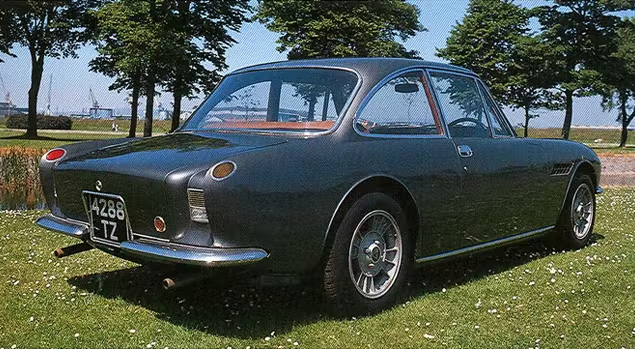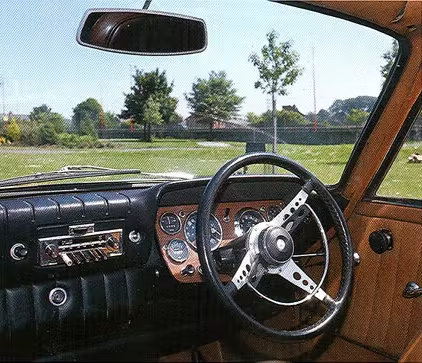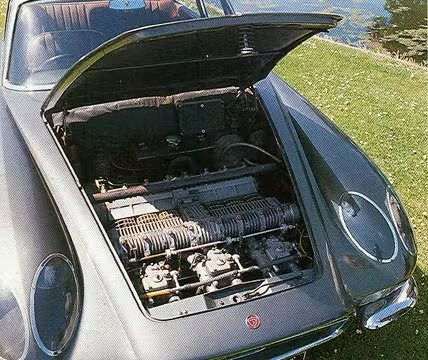Ask a classic car enthusiast to name the most famous car produced on the Emerald Isle, and it’s an easy answer: the DeLorean DMC-12. The second-most famous? That’s a little tougher, so we’ll help you out: It’s the 1959 Shamrock convertible. After that, well…
Never heard of the DAWB 6? There’s no shame in admitting that you haven’t. The front-wheel-drive car is not only unusual, but it’s also one of a kind. Its creator, Davy Woods, built it not for profit or production, but rather for fun. No wonder Woods’ colleagues at Belfast Tool & Gauge Company referred to the car as “Davy’s Folly.”

According to the Ulster Transport Museum in Belfast, Northern Ireland, where the DAWB 6 now resides, Woods and motorcycle racer Artie Bell collaborated on the idea, and the car’s name is a combination of their initials, along with the number of cylinders in the engine. The museum describes the DAWB 6 tourer as “a one-off special of exceptionally high quality, and it incorporates a number of unique features, such as flush door handles.”
The story of this rare machine began in 1949, when Bell, who finished second in the 1947 Isle of Man TT on a second-hand Norton, asked Woods to build him a motorcycle. Woods, however, convinced Bell that they should create a sports car instead. According to treasurecars.com, after five years of planning, Woods was ready to begin building the right-hand-drive DAWB. Bell? He had other priorities. So Woods trudged forward alone. Well, almost.

Woods visited the 1954 Turin Motor Show in search of a carrozzeria that would create a coupé body for his car. Bertone and Pininfarina turned him down flat, so Woods then turned to Billy Leitch, a former Woods apprentice who was running a small body shop that turned Rolls-Royces into hearses. Leitch was happy to help, and although his initials weren’t used in naming the car, they should have been. His contribution to the project cannot be understated.
“Without him we would have gotten nowhere,” Woods later said of Leitch. “He made the body from 20-gauge steel, from a model and sketches I’d made on the wall. There weren’t any proper drawings, for that or anything. I don’t know how he did it. He used wooden patterns so rough you could light your fire with them. He was a genius.”


Beyond the bodywork, Woods created almost everything else, although the DAWB does wear some reused parts from other cars: a windscreen from an MK2 Ford Zephyr, a modified Volvo windscreen for the back window, door frames from a Humber Hawk, and a few interior gauges. Woods’ greatest work on the car may be its engine – a transversely mounted, 1.4-litre, DOHC, air-cooled inline-six that produces 135 horsepower.
“When you start something like this,” Woods said, “you never know if it is going to work.”
Eight years after construction on the DAWB 6 began, it was completed in 1962. Oddly enough, its creator soon lost interest in it. With his goal accomplished, Woods was ready to move on.
The DAWB 6 is such an unlikely, unique beauty that we’re finding it difficult to do the same. Especially on St. Patrick’s Day.
Via Hagerty US
Read more
The greed that drove John DeLorean to destruction
Britain’s spaceship Solo sports car failed to take off
The Special Relationship: Five of the coolest British cars with American power











Brilliant car, reminds me a bit like the Welsh Gilern car
Hey for anyone reading this and would like more information this is actually the car built by my great grandfather David Woods. For those wondering the name DAWB comes from a combination of initials, David Woods and Artie Bell (DavidAriteWoodsBell = DAWB) who co built the car. Built in Belfast Tool and Guage (My great grandfathers engineering company) it took 5 years to plan and 8 years to build working 14 hours a day 7 days a week. Every part is almost entirely handcrafted from the most bespoke parts of the time and produced 96bhp/L which is staggering relative to the fastest production car at the time the Aston Martin db4 GT which only made 64bhp/L in comparison. It is currently kept in a museum in Belfast, I think the Ulster Folk and Transport, but I could be mistaken. For those who think this is fake I could provide even more photos are family has of the production of the car if I can find them. Also, to add Margret Thatcher actually took a visit to the company to view the car and other things he had worked on, he was awarded with a commander of the order of the British Empire (CBE) for his contribution to engineering. Maybe one day I could try to get the car back on the road but until then it lies for car enthusiasts to appreciate at the museum. Search DAWB 6 on google for more articles on the car.
Any questions feel free to ask